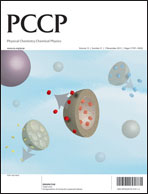Study on UV-shielding mechanism of layered double hydroxide materials†
Abstract
The development of UV-shielding materials has attracted considerable attention in the field of coatings and sunscreen. This paper reports the UV-shielding mechanism of layered double hydroxide (LDH) materials in terms of chemical composition, structure and morphology, by using (LDH/PAA)n films (n stands for bilayer number) through alternate LBL assembly of LDH nanoparticles and poly(acrylic acid) (PAA) on quartz substrates as a model system. A combination investigation based on experimental and theoretical study demonstrates that the maximum UV scattering can be achieved when λ/d ≈ 1.98; the introduction of Zn element is an effective way to tune the electron structure, band gap, transition mode and resulting UV-shielding property of LDH materials. A UV-shielding efficiency as high as 95% can be obtained by modulating the particle size, composition and thickness of the LDHs. Furthermore, the UV anti-aging capacity of LDH-modified bitumen was studied, which demonstrates a large improvement in UV-resistance performance of bitumen by the incorporation of LDH materials. Therefore, this work systematically discloses the relationship between UV-shielding property and chemical/structural parameters of LDH materials, which can be potentially used as anti-aging agents in various organic matrices and polymer areas.


 Please wait while we load your content...
Please wait while we load your content...